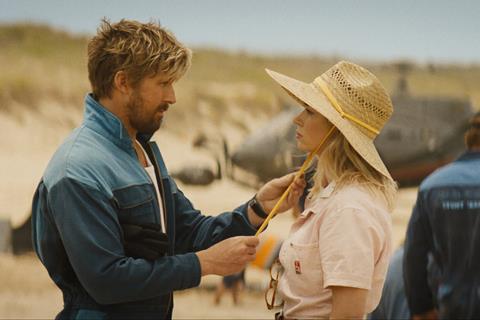
Inward investment films and drama series accounted for a record-breaking A$1.22bn (US$780m) estimated spend in Australia in the 12 months to June 30, 2023, up 35% year on year according to figures from Screen Australia.
For the third time in Australia’s history, more was spent to make foreign content than local. Spend on Australian content was A$1.13bn (US$720m) – a 26% fall from the previous year’s A$1.5m (US$960m).
The latest figures from Screen Australia’s Drama Report 2022/23 confirm that Australia has leaned into being a service industry – particularly for US productions. The scales first tipped towards inward investment productions in 2014/15. In 2020/21, it came as the global industry was getting back on its feet following the Covid outbreak
However, the ongoing US actors’ strike is having an impact on current production levels. Outgoing Screen Australia CEO Graeme Mason said: “Realistically, not until the second quarter of the calendar year will inbounds come back.”
Mason said he is proud of the “unprecedented surge” in production. He told Screen that in 2013/14, when he joined Screen Australia, overall expenditure was A$837m (US$537m). Now it is A$2.34bn (US$1.15bn). This is down by 4% on last year’s record high, but 31% above the five-year average.
Lack of Australian stories
But not everyone is happy. “The deeper you look at the figures and know more of the challenges behind the scenes, the more troubling the overall trends are for Australian audiences wanting to see authentic Australian stories on different screens,” said Screen Producers Australia chief executive Matt Deaner. “We are particularly concerned about the overall decline in expenditure on Australian stories.”
Mason acknowledged that cinema hits that look Australian are missing. “I look at the Brits and they have hits all the time. So does Denmark, Israel, and Korea. I hear people [in Australia] say, ‘If only I had A$50m’ … but these countries don’t.”
Australia has to be clever about making “cultural Australian films” at the right price point, he added. “The more Australian we are the better it can sell because it’s a point of difference – and a lot of our stuff is just okay rather than great.”
Figures in detail
The A$1.13bn (US$720m) expenditure on Australian projects went to 31 features and 86 adult and children’s drama series. Expenditure on the latter was A$761m (US$488m).
The A$1.22bn (US$780m) expenditure on international productions comprised 13 features and three dramas for the small screen with the latter accounting for a spend of A$809m (US$518m). Eighty projects spent A$410m (US$263m) on Australian post and digital services.
The 13 international films – including The Fall Guy, Godzilla vs Kong: The New Empire and The Kingdom Of The Planet Of The Apes – represented A$612m (US$392m) in Australian expenditure, 10 times more than last year and more than double the five-year average.
In stark contrast, 31 local features went into production – one less than previously – and total expenditure plunged by more than half to A$363m (US$233m).
The two official co-productions were with New Zealand.
Foreign investors accounted for about half the total Australian feature expenditure; the 40% Producer Offset – a tax rebate – accounted for about a third. The rest came from the Australian screen industry, local private investors, government, and festivals. Screen Australia put A$16m (US$10.2m) into 13 of the features.
In other findings, 56% of the national expenditure occurred in New South Wales while Queensland saw record activity.
Mason is particularly pleased at the growth in PDV (post, digital and visual effects) activity: total expenditure was A$714m (US$457m).
“We are becoming a destination of choice for foreign producers and that’s a lot of full-time local jobs and benefits for local producers,” he said.

























No comments yet